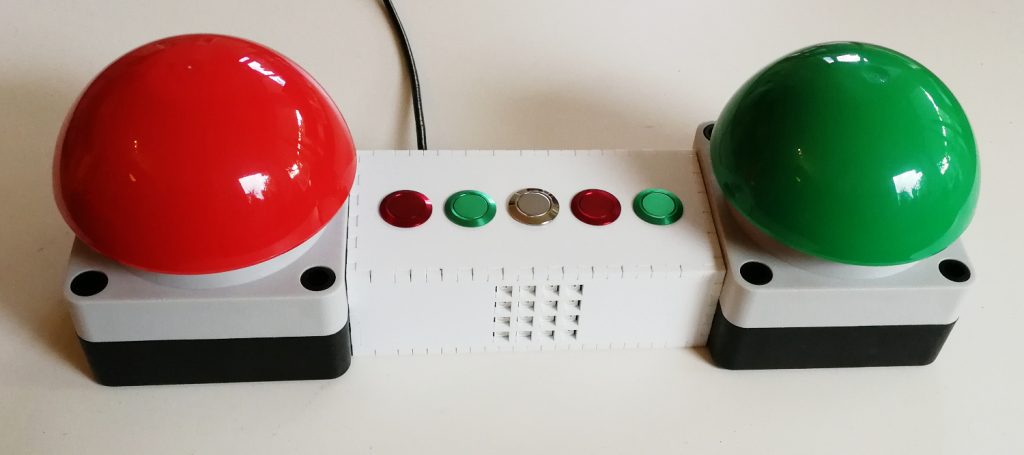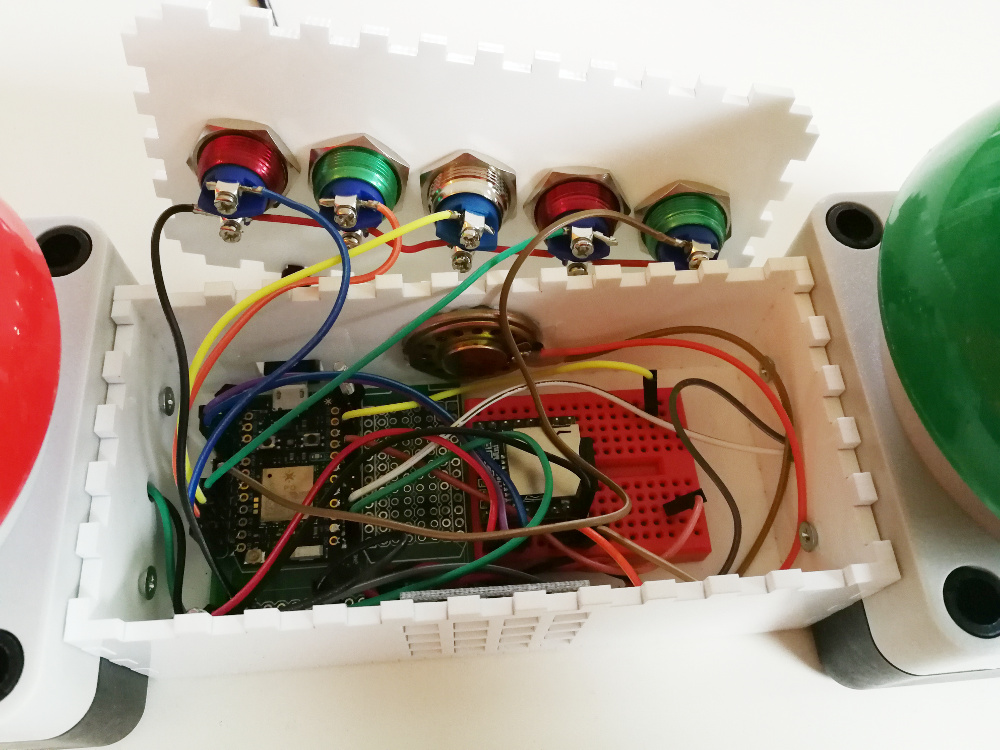To have a simple shield for the Raspberry Pi’s I created a Breakout for the GPIO headers. The Breakout is usable for alle generations of the Raspberry Pi by cutting along the marked line.
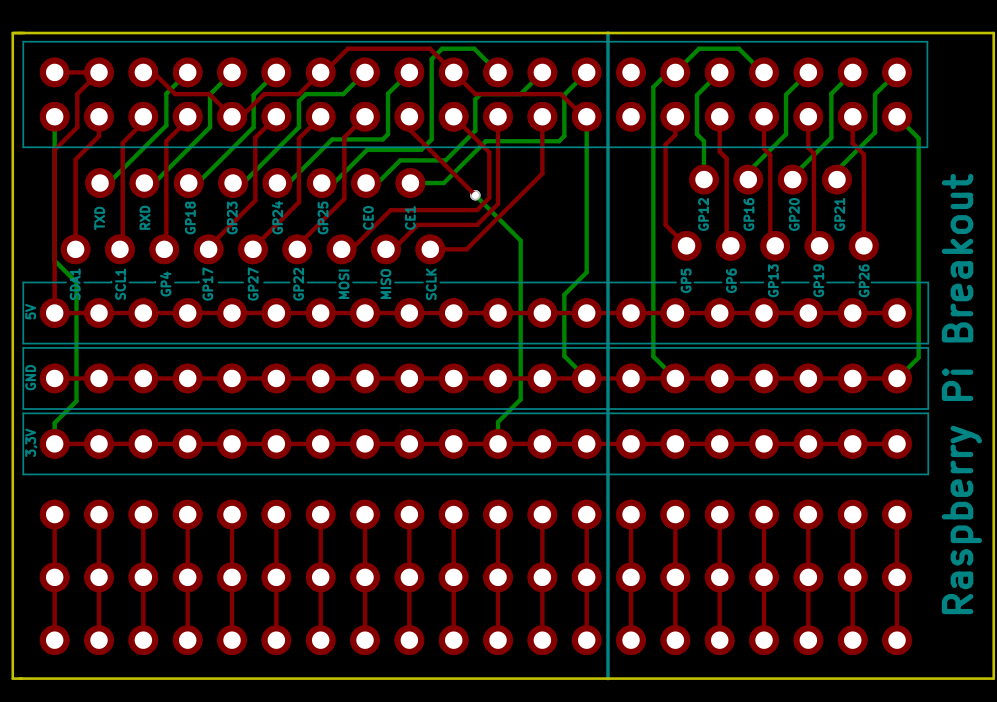

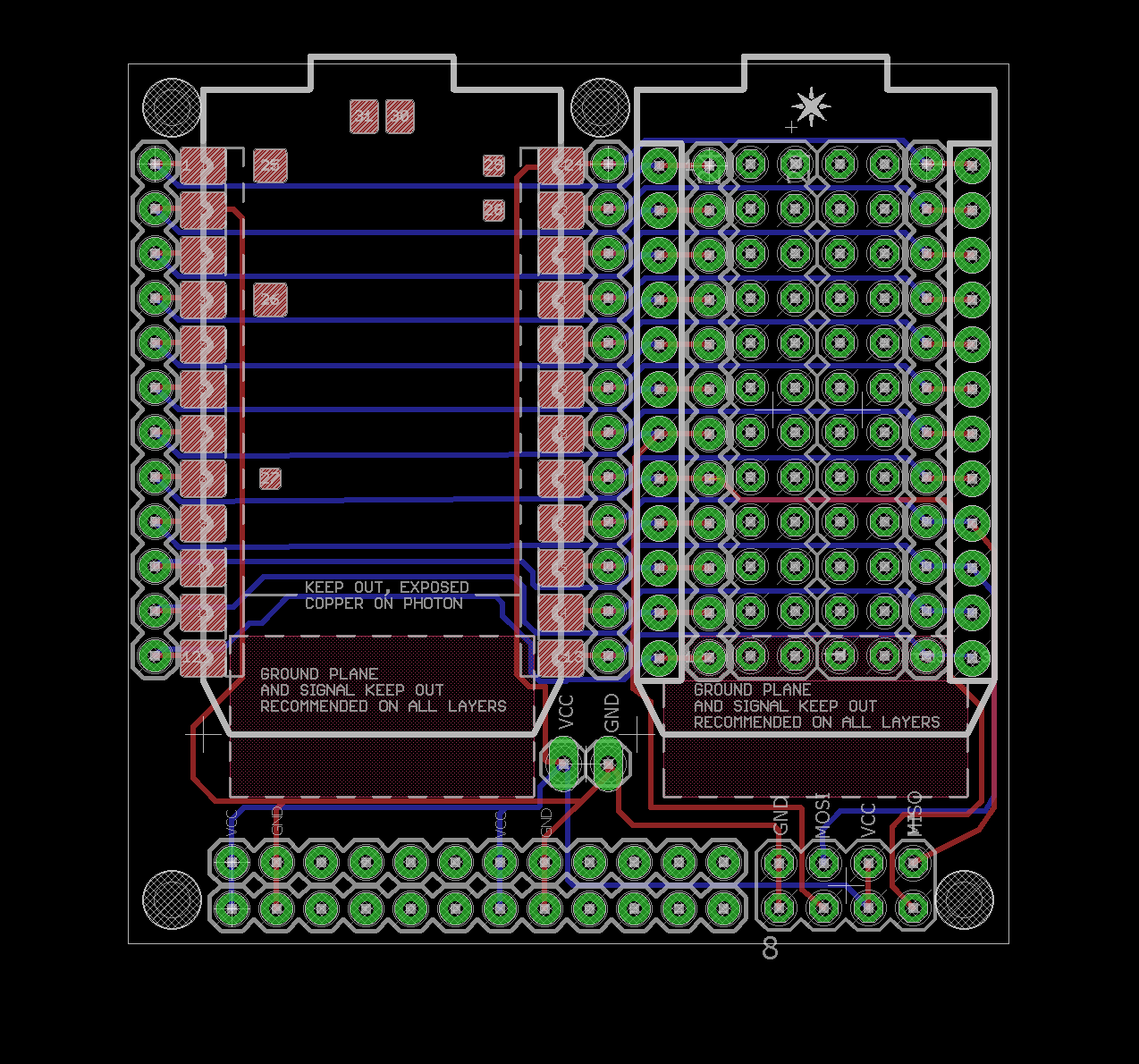
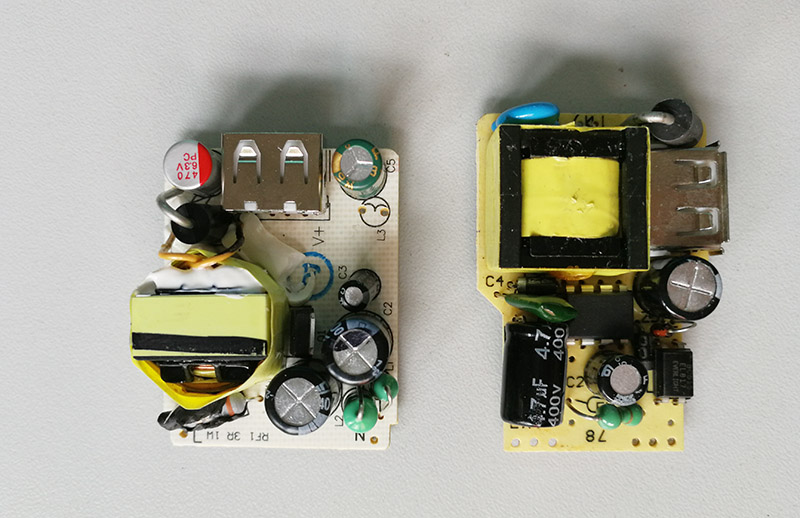
While reading about dangerous USB power supplies I decided to investigate the safety of the power supplies used by my wordclocks. I stumbled across the USB power supply tests of HJK and discovered a similiar power supply to the one I am currently using (ETA-U90EWE) which is according to the test result not that secure.
HJK saw a passed safety test for the Flypower PS10A050K2000EU so I decided to buy these. Unfortunately the reseller sent me the follow-up product: the Flypower PS10E050K2000EU. To make sure the new model also passed a safety test I contacted Flypower and they showed me the CE and GS safety test results. So I can confirm this follow-up model is also secure to operate.
They also showed me the CE and GS safety results for the next generation Flypower PS10J which should be also secure.
I disassembled the power supplies to make sure the short voltage distance is big enough. You can see the big distance on the Flypower PS10E (left) and a very bad distance on the ETA-U90EWE (right) on the images below.
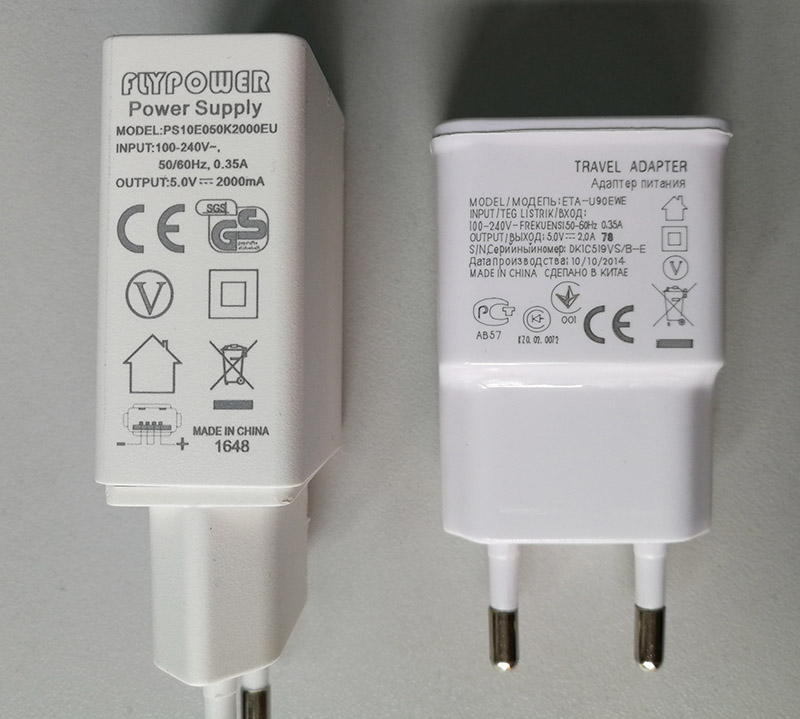

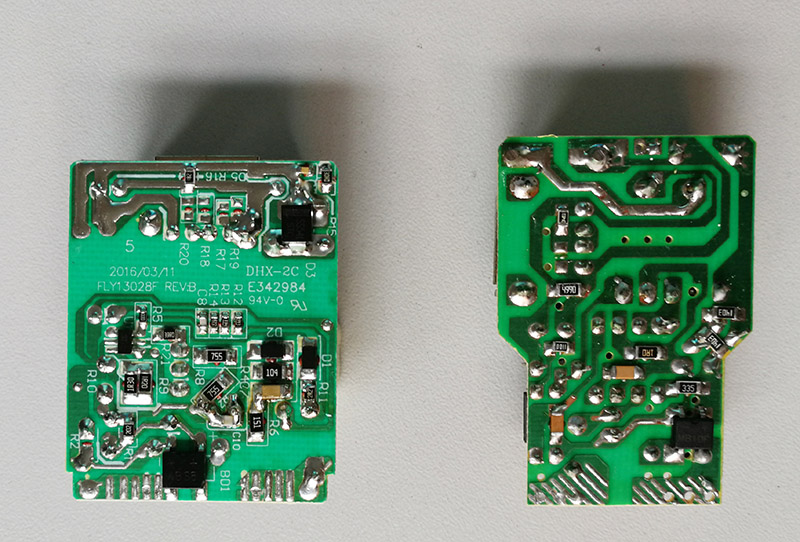
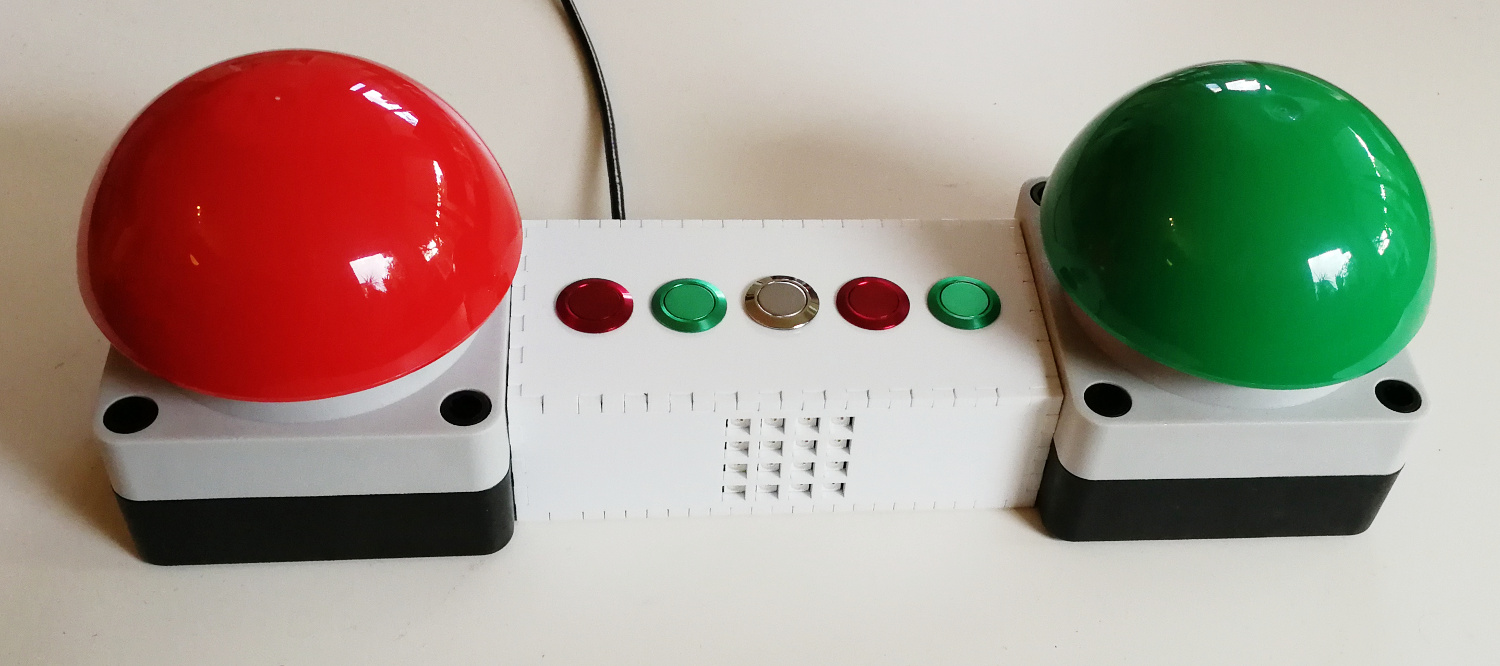
The photon is able to act as a native keyboard so I decided to build an input device for some computer games. The main parts are the big red and green push buttons which act as classic game buzzers. When pressing one of the big push buttons the WS2812B LED matrix lights green or red depending on button which was pressed first. Additionally the DFPlayer mini which is connected by UART to the photon is playing a buzzer sound on the small speaker.
The five additional buttons are used to trigger additional keys which are useful while playing games.
